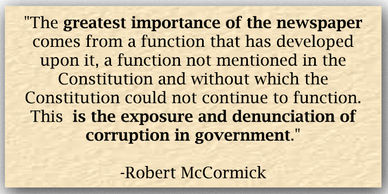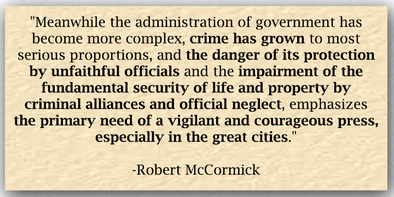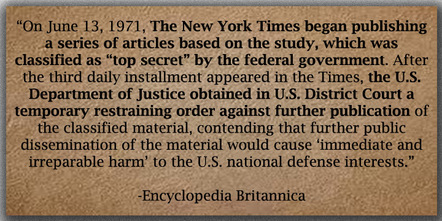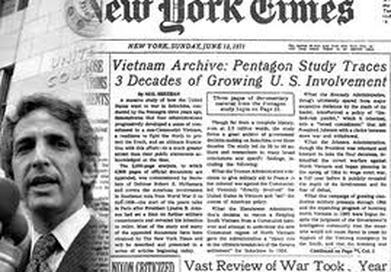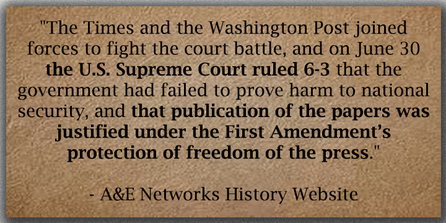"Check upon Government"
The pentagon papers: Using the Press To Expose government lies
Building upon the prior restraint principle established in the Near vs. Minnesota court case, The New York Times challenged the U.S. government's ability to restrict its publication rights, and in the process, exposed many governmental flaws and misleading information to the public.
|
The government considered the series of articles to be "top secret" and sought to restrict the publication of the articles because they contained information about the U.S.'s involvement in the Vietnam War that contradicted what President Nixon had told the public.
|
|
|
Using the prior restraint principle, The New York Times and The Washington Post were able to publish classified information from the Pentagon Papers and inform the public of misleading government statements.
McCormick’s pioneering work to clarify the right of the press to publish governmental information highlighted the importance of using newspapers to serve as a check upon government. |

